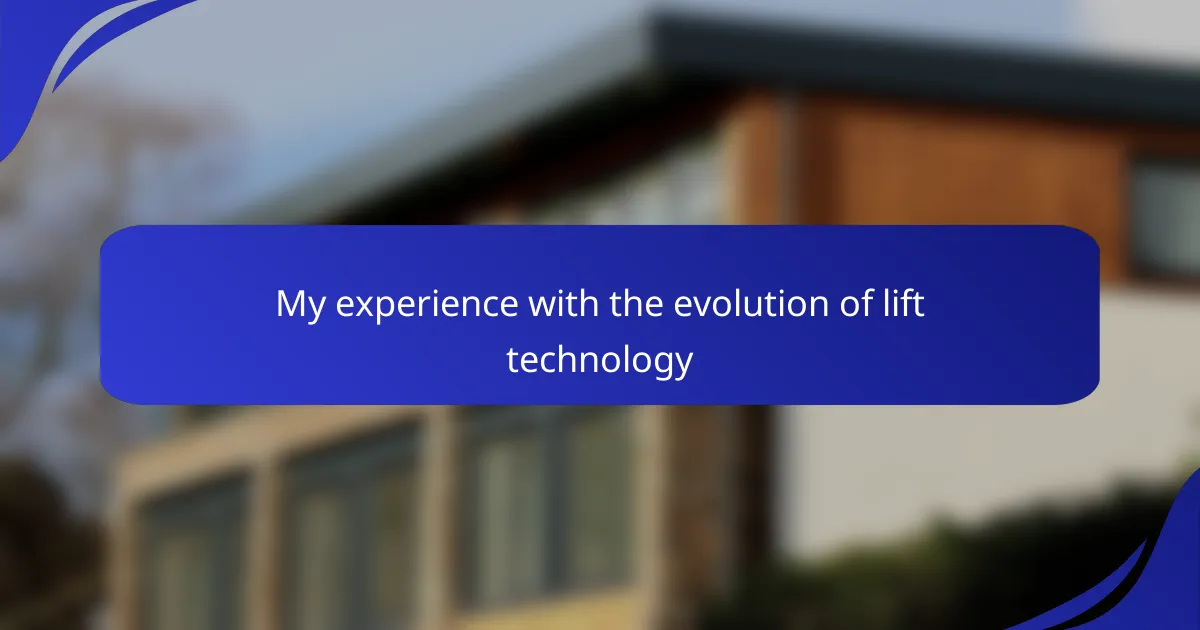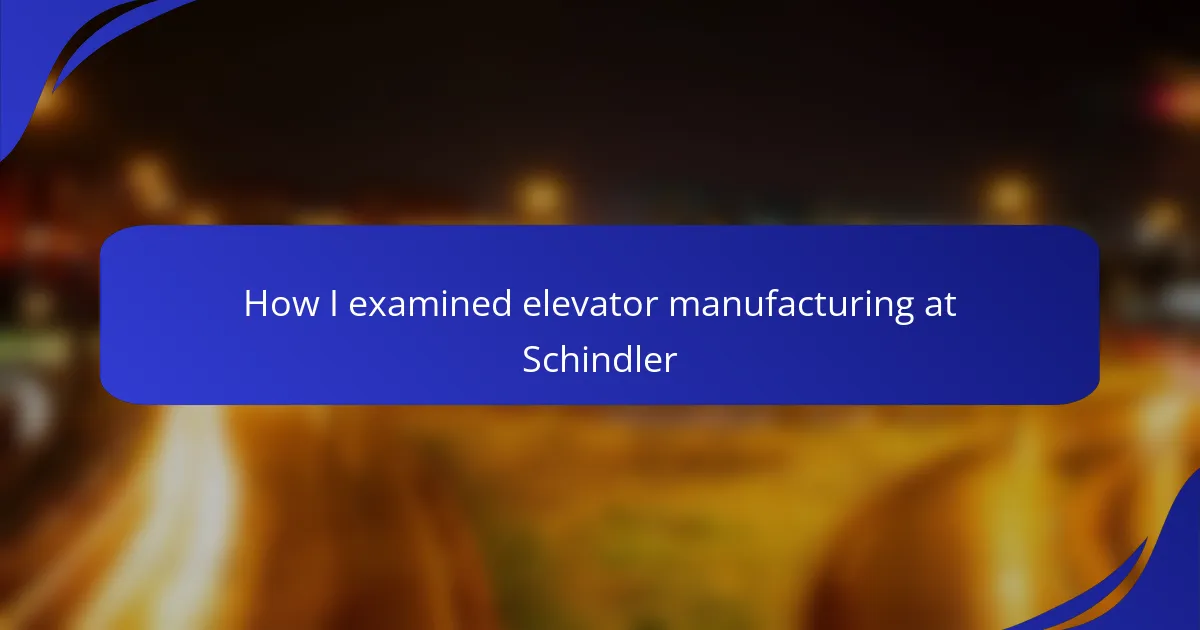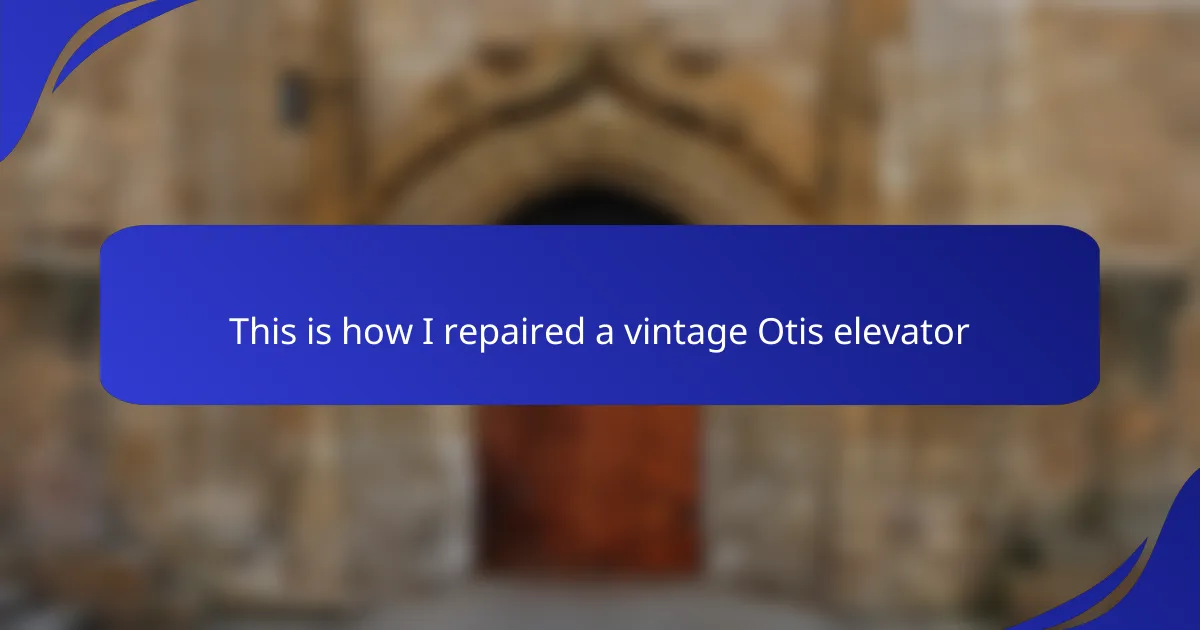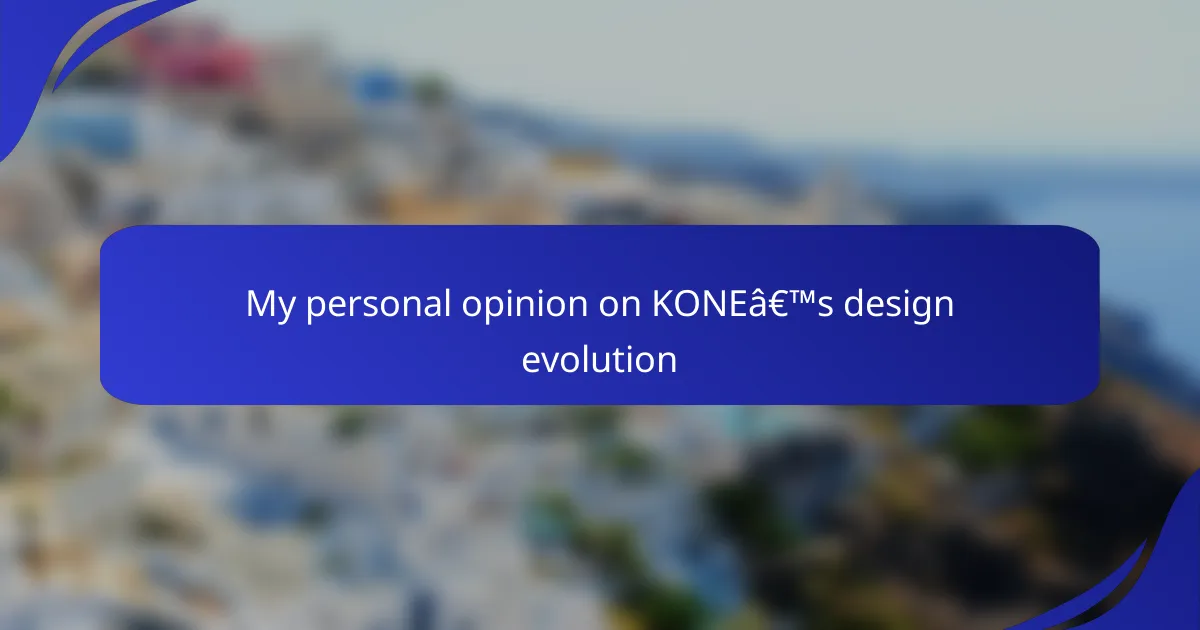Key takeaways
- Elevator technology has evolved from simple hoisting systems to advanced smart elevators enhancing safety and user experience.
- The introduction of the safety elevator by Elisha Otis in the mid-19th century revolutionized vertical transportation and urban architecture.
- Key innovations such as machine-room-less (MRL) elevators and AI integration improve functionality and energy efficiency in modern designs.
- Future trends focus on smart technology, sustainability, and enhanced safety features, shaping the next generation of vertical transport systems.
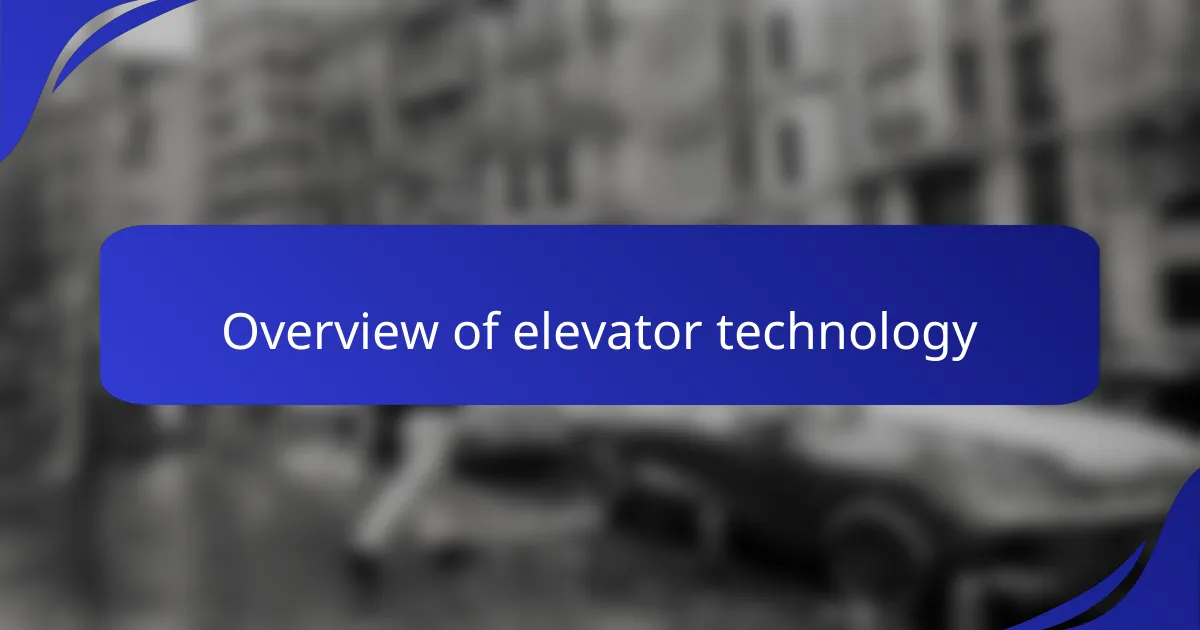
Overview of elevator technology
Elevator technology has transformed remarkably over the years, evolving from simple hoisting devices to sophisticated systems that prioritize safety and efficiency. I often think about the intricate mechanics that dictate how we can effortlessly glide between floors. Can you imagine how different our urban landscapes would be without these essential machines?
In my experience, the introduction of electric elevators in the late 19th century marked a pivotal moment in this journey. It allowed skyscrapers to reach new heights—literally and figuratively. I remember watching a documentary on early skyscrapers, and I was struck by how much people of that era relied on this breakthrough to redefine architecture and urban living.
Modern elevators are equipped with advanced technologies such as smart controls and energy-saving systems. It’s fascinating to me how they can now adapt to user patterns, enhancing efficiency and user experience. Have you ever noticed how some elevators can predict your destination and adjust accordingly? That innovation exemplifies the ongoing evolution in lifting technology, making our daily lives smoother and more connected.
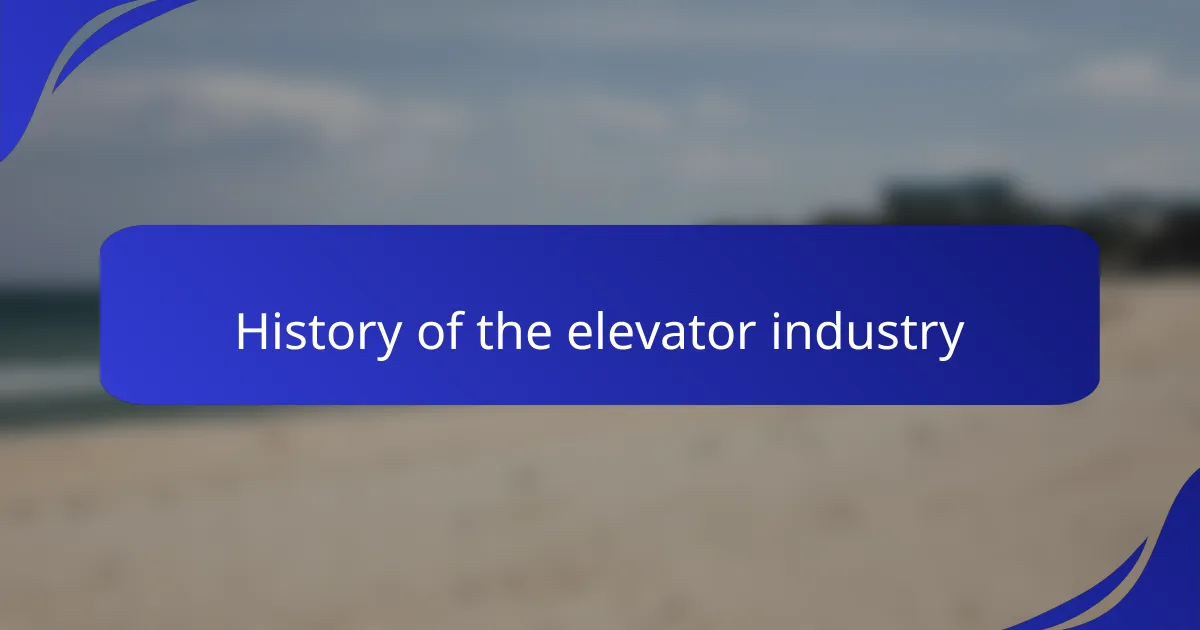
History of the elevator industry
The history of the elevator industry is a fascinating journey through innovation and engineering marvels. From the early days of simple hoisting systems in ancient Greece, where pulleys were used to lift heavy loads, to the invention of the safety elevator by Elisha Otis in the mid-19th century, I’ve always found these advancements to be remarkable. It wasn’t just about moving people efficiently; it was about revolutionizing urban architecture and making skyscrapers possible.
When I reflect on the significance of these developments, I remember visiting the Otis Elevator Company’s museum. Witnessing the first safety elevator felt like stepping back in time and seeing the spark of creativity that transformed our cities. Each advancement, from electric elevators to smart controls, seemed to open up new possibilities, shifting the way we perceive height and space in our everyday lives.
| Era | Key Developments |
|---|---|
| Ancient Times | Pulleys used for heavy lifting |
| Mid-19th Century | Invention of the safety elevator by Elisha Otis |
| Late 19th Century | Introduction of electric elevators |
| 21st Century | Smart elevators with advanced controls |
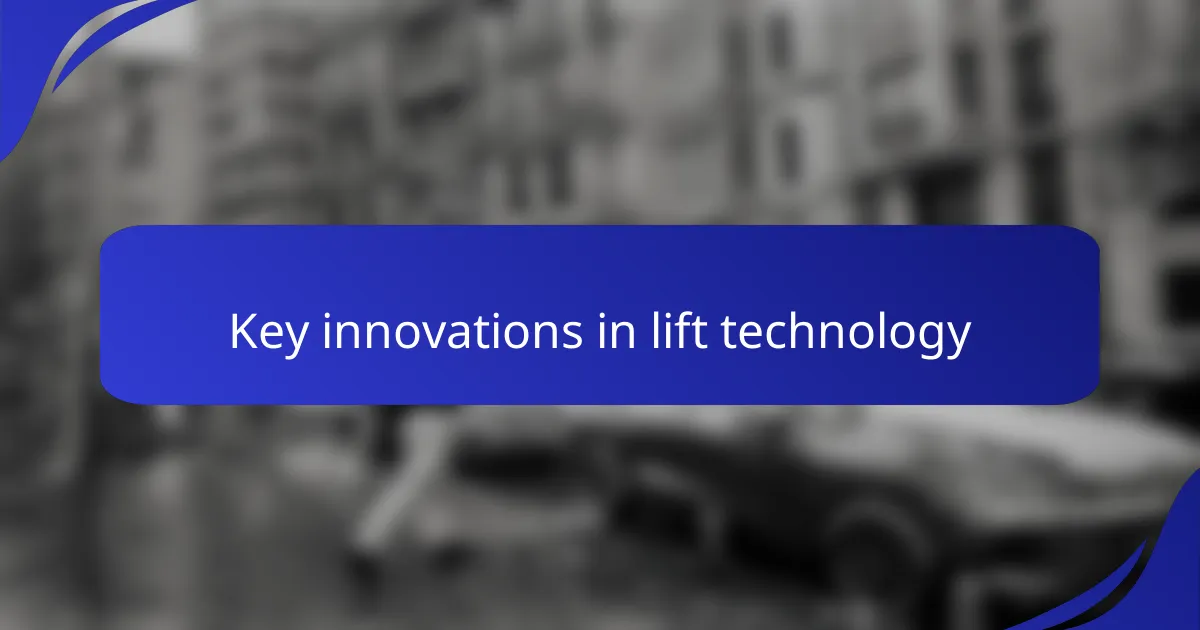
Key innovations in lift technology
Key innovations in lift technology have significantly transformed the way we experience vertical transportation. I fondly remember the first time I stepped into a glass elevator; the panoramic views were exhilarating, a testament to how technology can enhance our journeys. Innovations such as the introduction of machine-room-less (MRL) elevators not only save space but also improve energy efficiency, reflecting a growing emphasis on sustainability in design.
Here are some key innovations that have shaped lift technology over the years:
- Hydraulic Elevators: Revolutionized the ability to lift heavier loads, particularly for low-rise buildings.
- Traction Elevators: Used ropes and pulleys to offer smoother, faster rides and became the standard for high-rise buildings.
- Machine-Room-Less (MRL) Elevators: Enhance space efficiency and reduce construction costs while being environmentally friendly.
- Smart Elevators: Incorporate AI and IoT technology to improve traffic management and optimize energy use.
- Glass Elevators: Offer aesthetic appeal and panoramic views, connecting the indoor environment with what’s outside.
- Robotic Control Systems: Provide precise movement and increased safety through advanced monitoring systems.
These innovations not only enhance functionality but also often carry a sense of wonder and excitement that marks progress in our urban landscape.

Evolution of safety features
The evolution of safety features in elevators is a story of continuous improvement driven by necessity. When Elisha Otis introduced the safety elevator in the 1850s, it was a groundbreaking moment that eliminated the fear of free-falling—an anxiety I can only imagine people felt at the time. I remember first learning about this innovation and being struck by how a simple brake mechanism could transform not only an industry but also people’s trust in vertical transportation.
Over the years, I’ve seen how features like emergency brakes, redundant systems, and door sensors have become standard in modern elevators. These enhancements provide a layer of security that gives people peace of mind. Can you recall a time when you stepped into an elevator and felt that tiny twinge of worry? I often find comfort in knowing that today’s elevators are designed with sophisticated safety measures, which allow me to focus more on where I’m going rather than how I’m getting there.
In more recent years, advancements such as real-time monitoring systems and automated emergency responses have taken elevator safety to yet another level. Reflecting on these innovations, I can’t help but think about how they mirror advancements in other aspects of our lives. Isn’t it reassuring to know that even the technology responsible for moving us vertically is better equipped than ever to handle emergencies? It’s a testament to the dedication of the industry to prioritize our safety, making every ride smoother and more secure.

My personal journey with elevators
My earliest memory of elevators dates back to when I was a child, standing in awe as I watched the cabin glide up and down with such grace. Strangely, it felt like I was riding in a capsule that could defy gravity, transporting me to another world. That excitement has stayed with me throughout my life, especially as I’ve pursued opportunities in the elevator industry, witnessing firsthand how technology has transformed these essential machines.
As I grew older, I found myself captivated by the advancements in lift technology. I recall a particular moment when I rode in a newly installed high-speed elevator that whisked me to the top of a skyscraper in mere seconds. The rush of speed and smoothness instilled a profound appreciation for how engineering can impact our daily lives.
- I’m fascinated by how elevators have evolved from basic pulley systems to sophisticated, smart systems equipped with touchless technology.
- Learning about the incorporation of safety features, like emergency brakes and voice-activated controls, helped me appreciate the commitment to passenger safety.
- Witnessing the transition from manual operations to automated systems has made me reflect on how technology shapes accessibility for everyone.
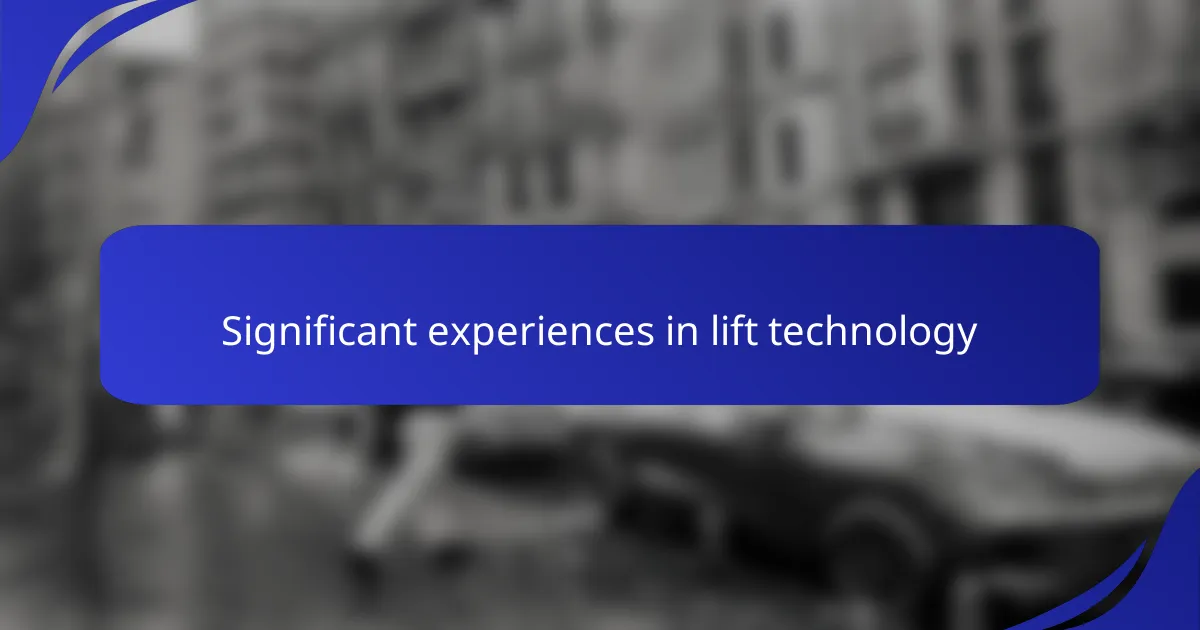
Significant experiences in lift technology
Every time I step into an elevator, I can’t help but reflect on the significant milestones that have shaped its technology. I vividly remember the first time I heard about hydraulic elevators. The way they revolutionized low-rise buildings fascinated me. They utilize fluid pressure to lift heavy loads, which amazed me as a child—how something as simple as a liquid could elevate structure! This innovation made vertical transport accessible to a wider range of buildings and businesses.
Another remarkable experience was witnessing the shift from traditional traction elevators to machine-room-less (MRL) designs. I recall touring a modern high-rise where the absence of a bulky machine room caught my attention. It seemed like a perfect blend of efficiency and space-saving design. MRL elevators employ advanced engineering to pack powerful machinery into the hoistway, pushing the boundaries of what we once thought was possible. It made me consider how space constraints in urban environments have led to such clever inventions.
As I reflect on these experiences, I find the evolution of technology in elevators is not just a tale of innovation, but of ongoing human creativity. For instance, have you ever noticed how today’s elevators can learn and adapt, making our journeys smoother? It’s a thrilling thought—each new technology seems to open doors, quite literally, to a world where our needs are prioritized, making travel between floors a seamless experience.
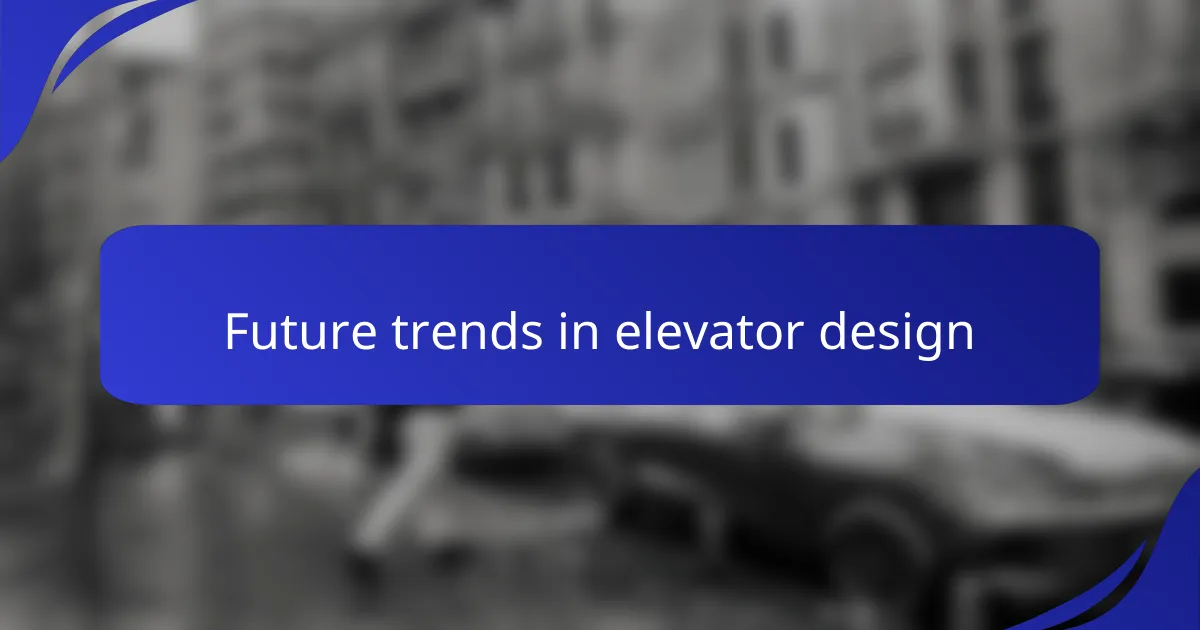
Future trends in elevator design
When I think about the future of elevator design, I can’t help but feel excited about the innovations on the horizon. I remember visiting a vertical transportation expo last year and seeing prototypes that incorporate smart technology. The idea of elevators becoming more intuitive and responsive to user needs is not just intriguing; it’s almost palpable. I can envision a day when elevators will not only anticipate our movements but also enhance our safety with advanced monitoring systems.
In addition to smart technology, sustainability is a major focus. Incorporating eco-friendly materials and energy-efficient systems is becoming the norm rather than the exception. It’s heartening to see manufacturers striving for greener solutions, ultimately contributing to a healthier planet and improving the quality of our urban environments.
- Smart elevators that use AI to predict peak usage.
- Increased integration with building management systems for seamless operation.
- Emphasis on energy efficiency with regenerative drives.
- Use of sustainable materials and designs to minimize carbon footprints.
- Enhanced safety features such as real-time monitoring systems.
